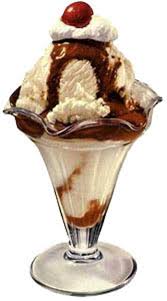Calorie cycling?
No, this
has nothing to do with getting on a bike and cycling away your calories. This
is a concept that can, once again, really aid you in your weight loss goals for
several reasons. It will allow you more freedom to eat larger portions, get rid
of cravings, aid in maintenance of metabolism and therefore keep your weight
loss continuing for longer, and your ability to diet will be improved
dramatically.
Remember,
the person who loses half a pound a week for a year will be better off than the
person who loses 10 pound a week for a month, and then quits. This is why
choosing a diet that is sustainable in the long term and which doesn’t cut out
any of your foods is the best option.... like this one.
What is calorie cycling?
A typical
dieting approach involves a method (direct or indirect) of cutting overall
calories. Most approaches employ a specific daily deficit – one where every day
is a low calorie day. The main problem with this, as you will have found, is
that your metabolism will eventually drop to match the new calorie intake. For
example, if you normally eat 2,000 calories a day, dropping to 1,500 a day will
initially see weight loss. But after a week/month, your metabolism will drop
down so that it only uses 1,500 calories per day. The result – no more weight
loss.
Has your weight loss frustratingly stopped?
Calorie
cycling is where you would alternate the amount of calories you eat per day.
For example, one day you would eat 1,300 and the next you would eat 2,000. The
advantages of this approach are;
·
You
are only really dieting one day at a time – when it gets tough, you can
remember that “Tomorrow is a high calorie day”. This is a huge psychological
advantage over an orthodox diet.
·
Human
metabolism is much more reactive to 3 day spans. By using your ‘up days’ (high
calorie days), you are essentially telling your body that there is still food
available and there is no need to drop metabolic rate.
·
You
can combine your high calorie days with your exercise days (if you are
exercising) so that the extra nutrients are used to support muscle maintenance/glycogen
replenishment rather than fat replenishment.
·
You
can use the high calorie days to eat some foods you have been craving – how
many other diets can say this?
·
Even
if those foods are a little sugary, they will be better partitioned as your
skeletal tissue will now be more insulin sensitive (a good thing) and your
liver will be glycogen depleted.
What this
means for you is less fat, more lean body tissue (think toned body), and a diet
which is mentally easier to stick to and physically easier to stick to.
There is
evidence that this type of calorie cycling can also be valuable for a range of
health benefits, such as lower inflammation, positive effects on asthma,
cholesterol levels, blood pressure, blood glucose levels, heart disease markers
etc. There are even animal studies showing that it can extend life-spans a very
significant amount, and lower risks for Parkinson’s disease. It is too early to
say regarding humans, but preliminary tests look good.
How to do this?
Work out
how many calories you need per day to maintain your weight. For example, if you
are a typical active male, this would be around 2,500 calories per day. Eat at
maintenance level every other day, and in between those days, cut your calories
by 500-1,000 calories. So it may look something like this;
Day
|
Calories
|
Monday
|
2,500
|
Tuesday
|
1,500
|
Wednesday
|
2,500
|
Thursday
|
1,500
|
Friday
|
2,500
|
Saturday
|
2,500
|
Sunday
|
1,500
|
That totals
14,500 calories for the week, which is a 3,000 calorie deficit – almost a pound
of fat. With the above plan, the person was also on high days for the weekend
(when they may be going out, socialising), and only had 3 diet days in the
week. By eating the correct foods on the ‘down days’, the person would be able
to feel fully satiated. By combining the calories like we discussed last week,
this could also mean two big meals of 750 calories each. Then on ‘up days’,
they would be able to be a little more lenient on their food choices and have a
little of what they felt they were missing out on. Maybe a bit of ice cream J

Ice cream on a diet? surely not!